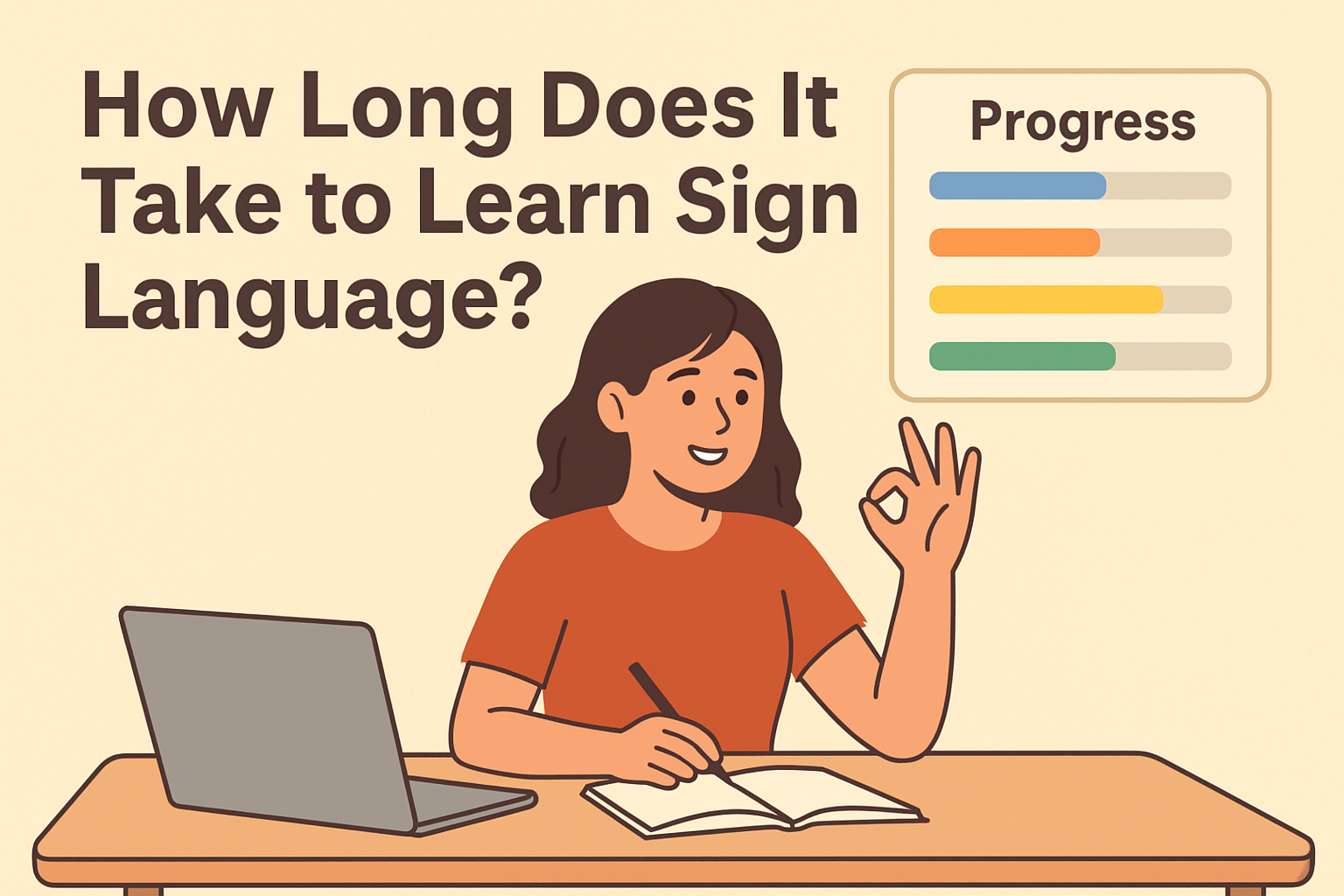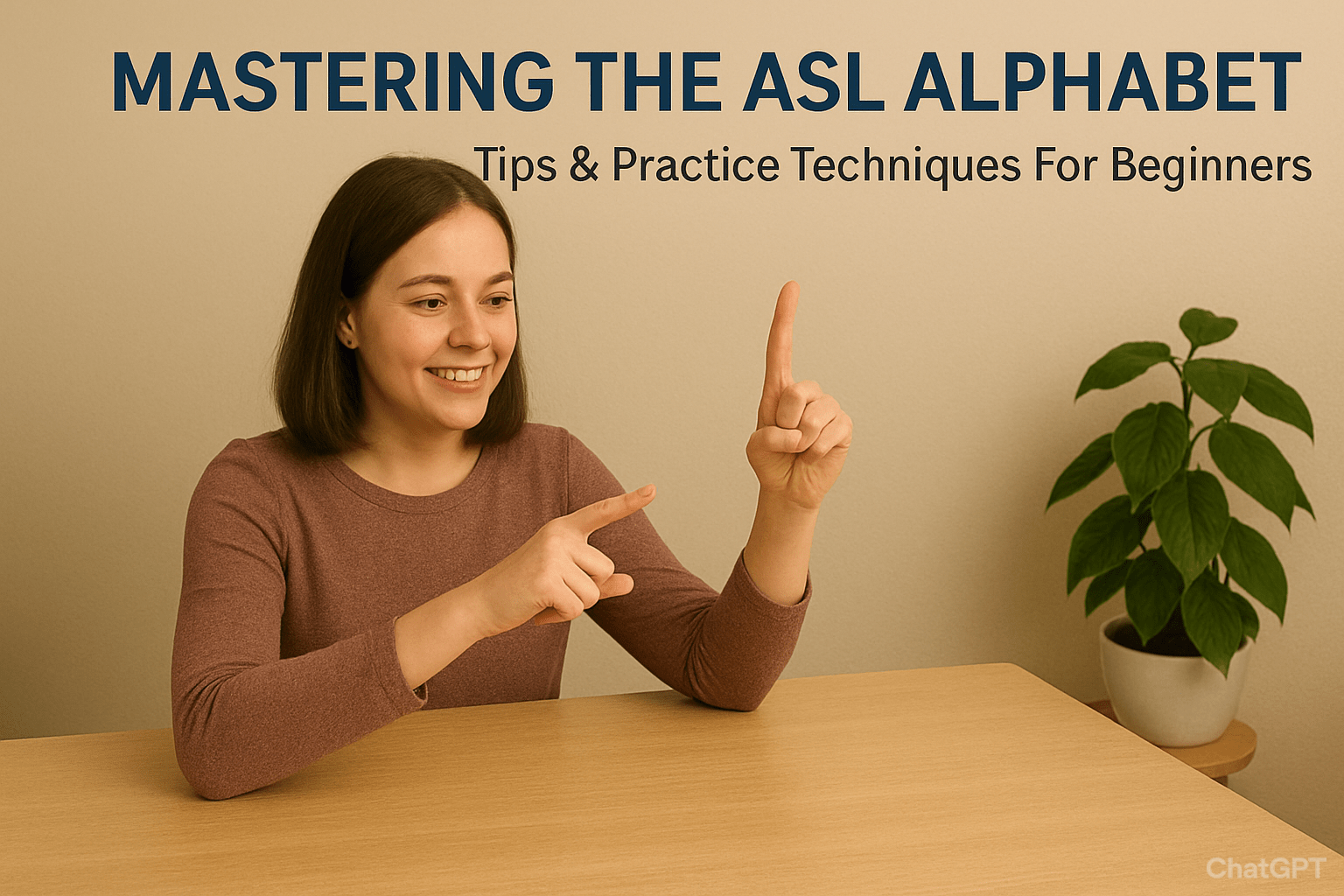One of the most common questions people ask before starting their sign language journey is:
“How long will it take me to become fluent?”
The honest answer? The time to learn sign language depends — on your goals, your practice habits, and how you approach learning.
Some people pick up conversational skills within a few months, while others take a year or more to feel fluent and natural. The good news is that with the right structure and consistency, anyone can learn sign language effectively, even with just a few minutes of practice each day.
1. Understanding What “Fluency” Means in Sign Language
Before you set a timeline, it’s important to clarify what “fluency” means to you.
In spoken languages, fluency often means being able to carry on a conversation smoothly. In sign language, fluency also includes visual grammar, facial expressions, and cultural understanding.
Here’s a rough breakdown:
- Basic conversational level (3–6 months): You can introduce yourself, ask simple questions, and understand everyday signs.
- Intermediate level (6–12 months): You can hold short conversations, express feelings, and understand common topics like family, food, and work.
- Fluent (1–2 years): You can express abstract ideas, tell stories, and engage comfortably in group conversations.
Each stage is achievable with steady effort — and the journey can be deeply rewarding along the way.
2. Factors That Affect How Fast You Learn
Everyone learns differently, but these factors play a big role in how quickly you progress:
✅ Time spent practicing — Even 15–30 minutes daily adds up quickly.
✅ Access to video resources — Using visual tools like the Sign Academy Sign Dictionary helps you remember signs faster.
✅ Consistency — Regular exposure and repetition matter more than long study sessions once in a while.
✅ Community interaction — Practicing with others helps you apply what you’ve learned.
✅ Motivation and mindset — Staying curious and patient turns learning into a long-term habit instead of a chore.
💡 Tip: Learners who engage with real signers — whether online or offline — tend to improve two to three times faster than those who study solo.
3. Setting Realistic Milestones
To stay motivated, break your sign language journey into small, meaningful goals. Here’s an example:
| Month | Goal | Focus Area |
|---|---|---|
| 1 | Learn the ASL or ISL alphabet | Fingerspelling and basic greetings |
| 2–3 | Build vocabulary | Everyday signs — food, family, emotions |
| 4–6 | Start short conversations | Practice introductions and common phrases |
| 7–12 | Improve fluency | Combine signs into sentences, use expressions naturally |
Don’t worry if progress feels slow. Even learning 5 new signs a day equals over 150 signs per month!
4. Using Tools Like Sign Academy to Speed Up Progress
Learning sign language isn’t about memorization — it’s about observation and practice.
The Sign Academy Sign Dictionary is a great resource because it shows real people signing, so you can learn how hand movements, orientation, and facial cues all work together.
Pair that with:
- The article Essential Signs You Should Know for building a practical vocabulary base.
- Conversational Phrases in Sign Language for practicing real dialogues.
- And Common Mistakes When Learning Sign Language to avoid early pitfalls.
These resources will help you learn systematically and make sure your time is well spent.
5. Staying Motivated Through Plateaus
Every learner hits a plateau at some point — that feeling when progress seems to stall. Here’s how to push through:
💪 Celebrate small wins. Learned 10 new signs this week? That’s progress worth recognizing.
🗓️ Track your learning. Use a journal or app to note new signs you’ve mastered.
👫 Find a practice partner. Joining an online or local sign community keeps you accountable.
🎥 Watch sign language content. Movies, vlogs, or tutorials — immersion accelerates learning.
Remember, fluency isn’t about speed. It’s about connection — understanding and being understood.
6. A Realistic Time To Learn Sign Language for Most Learners
Here’s what an average learning journey might look like if you practice 20–30 minutes a day:
- Month 1–3: You start recognizing and recalling common signs.
- Month 4–6: You can handle basic conversations.
- Month 7–12: You begin signing naturally and confidently.
- Year 2 onward: You achieve true fluency, able to converse on nearly any topic.
Some learners reach conversational fluency in as little as six months with daily immersion, especially when using video-based learning tools like Sign Academy.
7. Conclusion
So, how much time does it really take to learn sign language? The answer is — as long as it takes to stay consistent.
There’s no finish line; there’s just progress, day by day. Whether your goal is to communicate with Deaf friends, work in an inclusive setting, or simply appreciate a beautiful visual language, every sign you learn brings you closer.
Start today, stay curious, and let the process unfold — you’ll be amazed at how much you can express with your hands and heart in just a few months.
👉 Explore the Sign Academy Sign Dictionary to begin your journey today.


